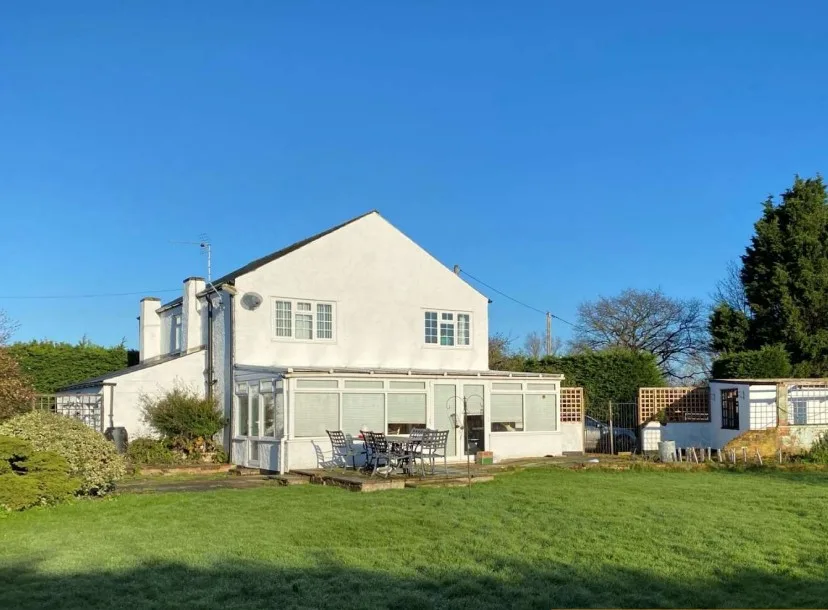Planners refused a couple’s application to demolish their home after telling them their proposed replacement was an “unduly prominent, bulky and intrusive form of development”.
The Johnsons live at Hithertree House Nornea Lane Stuntney near Ely.
They applied to East Cambridgeshire District Council to replace it with a five-bedroom self-build home.
But planners told them their proposal “is not considered to be of a high-quality design.
“Instead, an unduly prominent, bulky, and intrusive form of development would result that would be at odds with the rural and predominantly undeveloped makeup of the site’s surroundings.
“The existing dwelling has an unassuming and low-key presence upon the site.
“Against this starting point, the intended replacement dwelling and garage would have a noticeable and harmful urbanising effect.”
City of Ely Council had no concerns over the new house (apart from drainage concerns) and no ward councillor commented.
But planning officers argued that outside development envelopes, housing is strictly controlled, “having regard to the need to protect the countryside and the settings of towns and villages”.
Council policies restricted development to certain categories and may be permitted as an exception, including replacement homes in the countryside.
The Johnsons were told their homes is outside of the development envelope of Soham and, as such policies determine replacement homes.
The council said they could only support replacing an existing home where it is of a “scale and design which is sensitive to its countryside setting, with its height being similar to that of the original dwelling.
“If an alternative height is proposed, the applicant will be expected to demonstrate that the scheme exhibits exceptionally high quality of design and enhances the character and appearance of the locality”.
The Johnsons were told their replacement home complies with some policies but not when it comes to its scale and design.
“The merits of the proposal including its scale and design have been assessed in full and are not considered to comply with the requirements of the policy in respect of scale”.
And on that basis is not acceptable in principle as a policy exemption.
The Johnsons were told that a replacement must be of the same height; if an alternative height is proposed “then the scheme should be expected to enhance the character and appearance of the locality”.
Officers quoted policies within the East Cambridgeshire Local Plan, 2015, that states that homes must “provide a complementary relationship with the existing development and conserve, preserve and where possible enhance the distinctive and traditional landscapes and key views in and out of settlements.
“Development proposals should ensure that the location, layout, massing, materials, and colour of buildings relate sympathetically to the surrounding area.
“The policy requires that the proposal does not adversely affect the character and appearance of the locality or its countryside setting.
“It is considered this would mean that the scale and design of the proposed dwelling should remain in keeping with the existing property it will be replacing on the site.
“The proposed development would replace the dwelling with a larger two storey detached dwelling.
“Whilst the existing property has existing outbuildings located within its curtilage amounting to additional footprint, these elements are detached and therefore do not read as one whole when considering the footprint of the physical host dwelling itself.
“They are also low level and are not prominent in views from the public domain.”
The Johnsons current home is described as a single range two storey building which sits gable end onto the road with limited single storey extensions to one side and to the rear.
The building has a main span of approximately 7.7 metres. The footprint of the dwelling is approximately 140m2 and the floor area is approximately 220m2.
The proposed replacement (discounting the attached single storey garage) is a two-storey single range building which sits parallel to the road with a width of approximately 19 metres fronting the road and a main span of 10.6 metres.
The footprint of the dwelling is approximately 200m2 and the floor area is approximately 400m2.
“The proposal would increase the footprint by approximately 60m2 and almost a doubling of the floor area of the dwelling,” say planners
They recognise the Johnsons’ argument that the current home should be read as including the existing detached garage and outbuilding to be demolished.
“However, the existing outbuilding and garage are low level and detached and do not contribute significantly to the massing of the dwelling,” say planners.
And policy requirements are clear that “the replacement dwelling should be of a scale and design which is similar to the original dwelling.
“The policy does not seek to consider in isolation the cumulative footprint of the outbuildings together with the dwelling.
“The policy seeks to control the scale of the dwelling to avoid substantial dwellings being introduced in isolated locations that result in harm to the character of the area.
“In this case, the attachment of the integral garage would result in an introduction of massing that could otherwise be avoided were this be broken up by a separate building as in the current situation.
“The scale of the proposal is exacerbated by poor design features that worsen the impact of this massing.
“Therefore, the scale of the development should not be read in isolation as the only concern with the proposal.
“The proposal also introduces a design with poorly articulated features.
“The proposal would introduce wide spans measuring approximately 10.6 metres which are not considered to be in scale or character with the existing building or with the area generally.
“The excessively wide spans result in an overly long range across the frontage of the site with a squat appearance.
“The proposal is characterised by shallow roof forms, half hipped roods, gable projections and a pitched feature within the attached garage.
“All of which demonstrate a lack of cohesiveness of architectural style.
“This is also coupled with the varying window sized at ground and first floor, particularly on the rear elevation, that show no relevance to a window hierarchy and result in a vast amount of glazing that does not contribute to one distinct architectural style.”
Planning officers, summing up the Johnsons’ scheme, said it would provide “by virtue of its scale, massing and design, a prominent, low-quality form of development in a rural location.
“It would cause significant harm to the visual amenity of the area and the character of wider countryside”.























